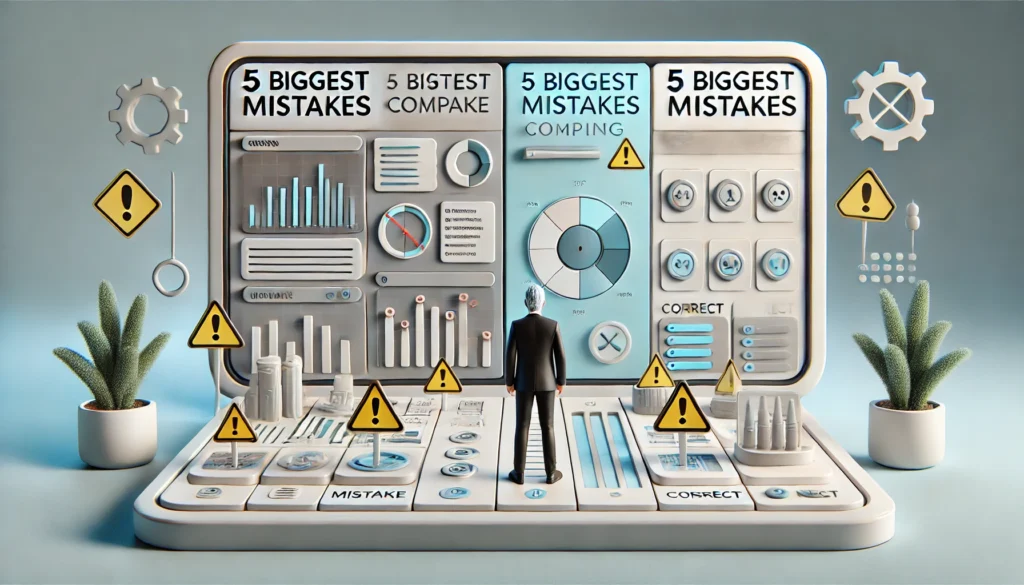Meta description: Learn the biggest mistakes companies make when adopting AI calling. Boost your strategy and ensure success with our expert guide.
AI calling holds incredible promise. Think about it: better customer service, super-efficient operations, and even lower costs. It’s exciting, right? But here’s the kicker: many companies dive in headfirst and don’t quite hit the mark. They miss out on the full benefits. It’s like having a powerful tool but not knowing how to use it properly.
This blog post is all about those common missteps. We’re going to break down the five biggest mistakes companies make when bringing AI calling into their business.
Thanks for reading—why not stick around and see what else is new?
Mistake 1: Not Having a Clear Plan or Goal
Imagine building a house without blueprints. You’d start hammering nails. That’s what many companies do with AI calling. They see others doing it and think, “We need that too!” But without clear goals, how do you know if you’re succeeding? Or even what the AI should be doing in the first place?
Let’s say a company decides its AI calling system will handle customer questions. Great! But they don’t get specific. Which questions? What does “success” look like? The AI might answer basic stuff, but then it stumbles on anything complicated. Customers get frustrated.
The company sees no real benefit. Why? They didn’t fully understand the problem-solving capabilities of artificial intelligence about their specific needs from the outset.
This mistake is a significant drain on resources. You pour money into something that doesn’t deliver. Your staff and customers end up frustrated.
So, how do you avoid this? Simple: set clear goals.
- Be Specific: Pin down exactly what tasks the AI should handle. Is it answering FAQs? Routing calls? Qualifying sales leads? Get detailed.
- Know Your Metrics: How Will You Know If It’s Working? Is it shorter call times? Happier customers? More sales? Define your measures of success.
- Start Small: Don’t try to automate everything at once. Begin with a small pilot project. Test it out. Learn. Adjust. Then expand.
Mistake 2: Ignoring Data Quality
Think of AI as a student. It learns from what you teach it. If you feed it bad information, it will give bad answers. Plain and simple. A huge mistake companies make is not caring enough about the quality of the data they feed their AI calling systems. They use old, incomplete, or wrong information.
Picture this: a company trains its AI using old customer chat logs. This data is full of unresolved complaints and outdated product info. When that AI starts talking to real customers, what happens? It gives wrong answers. It can’t fix problems. Customers get furious. Suddenly, your AI isn’t a solution; it’s creating bigger headaches. Your company’s good name takes a hit.
Poor data leads to poor AI decisions. It leads to unhappy customers. It can even lead to issues with rules and regulations.
To avoid this issue, you must prioritize data quality.
- Clean Up Your Act: Before the AI even sees your data, ensure it’s accurate and up-to-date. Get rid of duplicates. Fix mistakes.
- Set up Data Rules: Establish clear processes for collecting, storing, and maintaining data. This keeps the quality high all the time.
- Keep It Fresh: AI needs new information to stay smart. Regularly update the data you’re using to train and run your AI.
Mistake 3: Lack of Employee Training and Buy-in
Introducing AI-powered calling changes things for your team. They need to understand what’s happening and how to work with the new systems. Too often, companies introduce AI to their staff without explanation or training. This breeds fear and resistance. “Am I losing my job?” becomes the unspoken question.
Imagine your customer service team. An AI system arrives to handle simple calls. Employees immediately fear for their jobs. They are unfamiliar with how to use this new system. They don’t know how to take over a call from the AI. Morale plummets. Things get tense. The AI doesn’t integrate smoothly into the daily workflow. You don’t achieve the efficiency gains you had hoped for.
This mistake leads to unhappy employees. It creates operational bottlenecks. It can even make your workplace feel negative.
To avoid this, you need to bring your employees into the loop from day one.
- Talk It Out: Explain why you’re using AI. Show them how it will benefit them by automating boring, repetitive tasks. Make it clear that the AI is a tool to empower them, not replace them.
- Train Them Up: Don’t just show them the system. Teach them how to work with it. How do they handle calls the AI sends their way? How do they use the insights the AI provides?
- Listen to Them: Encourage employees to share their thoughts and feedback about the AI system. This helps improve the system and makes them feel valued.
Mistake 4: Over-Automating Human Interactions
AI calling is undoubtedly powerful. But here’s the thing: not every conversation should be automated. Some customer interactions need a human touch. They need empathy, understanding, and real human judgment. A common mistake is trying to automate too much. Companies try to let AI handle every single call.
What happens when a customer calls with a sensitive, emotional problem? Something personal about their service. An AI should stick to its script. It can’t understand the emotion. The customer feels ignored, frustrated, and unheard. That can hurt your customer loyalty and brand reputation.
Automating too much can lead to unhappy customers. It can mean lost sales. It can even damage your brand’s image.
To avoid this, you’ve got to find the right balance between automation and human connection.
- Pick Your Spots: Determine which types of calls AI is best suited for. Simple questions, scheduling appointments, and providing basic information – these are great. Complex complaints, emotional issues, unique problems? Those need a human.
- Smooth Handoffs: Make it incredibly easy for a call to transition seamlessly from AI to a human. Customers shouldn’t have to repeat their story. The human agent should be aware of everything the AI has already discussed.
- Keep Your Human Team Strong: You still need a skilled team of human agents. Their job is to focus on those high-value interactions. They handle the tough stuff that requires empathy and real problem-solving.
Mistake 5: Failing to Monitor and Improve
Launching an AI calling system isn’t a “set it and forget it” kind of deal. It needs constant watching. It needs regular tweaks and improvements. Many companies install AI calling and then just assume it’s done. They don’t track its performance. They don’t make adjustments.
Imagine a company that launches its AI calling system and then stops paying attention to it. Over time, the AI might start making weird mistakes. It might struggle with new kinds of questions. Customer satisfaction scores might quietly drop. The company doesn’t notice. They don’t fix anything. Soon, that AI system becomes useless, maybe even a liability.
This mistake means your AI won’t perform its best. You’ll miss chances to make it even better. And your customers might have bad experiences.
To avoid this, you need a system for continuous monitoring.
- Watch Your Numbers: Keep a close eye on key metrics. How many calls is the AI resolving? Are customers happy? How long are calls taking?
- Gather Feedback: Ask both customers and employees to share their thoughts about the AI system. Use surveys, reviews, and direct conversations.
- Tweak and Refine: Regularly review how the AI system is performing to ensure optimal results. Use your data to make informed decisions and implement smart changes. This could involve updating its scripts, expanding its knowledge base, or even retraining the AI with new information.
The Bottom Line
Getting AI calling right takes thoughtful planning, attention to detail, and ongoing effort. However, by avoiding these common pitfalls, your company can truly unlock the full potential of AI. You’ll make customers happier. You’ll boost your efficiency. And you’ll set yourself up for real growth. Smart AI means better business, simply put.
FAQs
How can AI calling benefit my business?
AI-powered calling can automate routine tasks, handle a high volume of calls, and provide 24/7 customer support. This makes things more efficient and keeps customers happy.
Is AI calling suitable for all types of businesses?
AI calling can help many businesses. It shines when you have a lot of calls or repetitive customer questions.
How long does it take to implement an AI calling system?
It depends on the complexity of your system and the readiness of your data. A basic system might be up in weeks, but a more complex one could take several months.
Will AI calling replace my human customer service agents?
Usually, AI calling helps your human agents. It takes care of the simple tasks, allowing your team to focus on complex or sensitive issues. It often creates new roles for them as well.
What is the most important factor for successful AI calling adoption?
Having a clear plan is key. Knowing your specific goals and constantly checking how well the AI is doing are also super important for success.
Before you head out, don’t forget to check out some of our other great reads!






